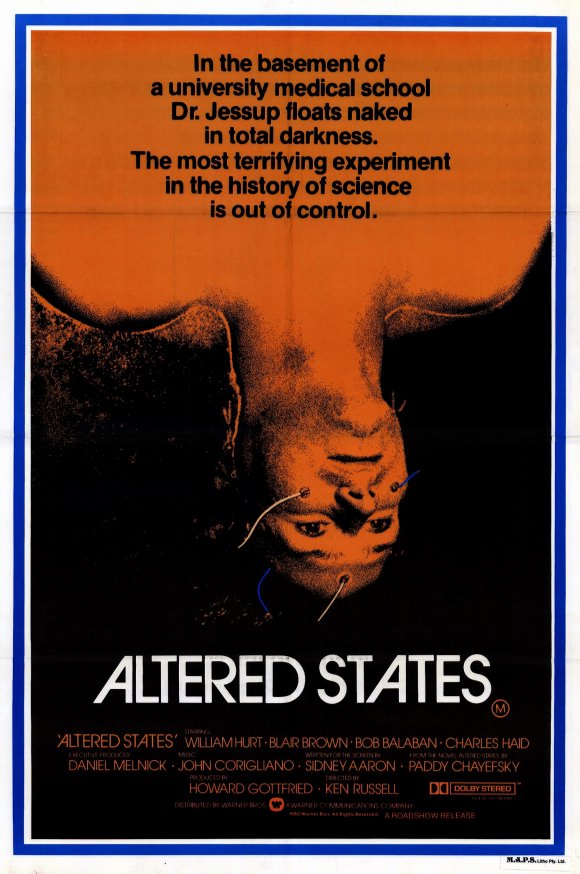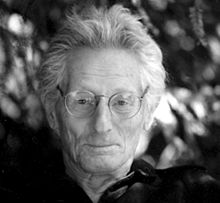The Lilly Path To Freedom: (Part 2 ~ History)
FLOAT TANKS TWO: THE HISTORY
JOHN LILLY: INVENTOR OF FLOAT TANKS
John Lilly, (1915-2001) invented the first float tanks in 1953. An American genius and genuine founding father of the American counter-culture, Lilly was part of a cluster of game-changers that included the likes of Baba Ram Dass, Buckminster Fuller, Steve Jobs and Terence McKenna. Like many of the aforementioned individuals, Lilly began by making his way through more traditional channels; becoming first a doctor, a neuroscientist, and a psychoanalyst, in turn. Singularly original, he would not be defined by any particular one of those disciplines. He took what he needed from each category, and then transcended it, ingesting formidable amounts of psychoactive drugs along the way. Eventually, it was his research for the Navy on extreme sensory reduction that brought him to the source of his current fame as the originator of “sensory deprivation tanks“. The Navy wanted to know what might happen to astronauts or submarine operators while cut off from normal external stimuli for long periods of time. Lilly wanted to know the same thing, but for different reasons.
Born a Catholic in St. Paul Minnesota in 1915, John Lilly quickly went beyond the teachings of the Church. He read Huxley’s “Brave New World” and philosopher George Berkeley, (whose writing foreshadowed quantum physics by about three hundred years). When Lilly began experimenting with the pathways of consciousness in the 1950’s he was trying to discover if awareness originated in our brains. Do we generate it, he wanted to know, or are we simply conduits for it? Are we gods, or merely flesh instruments reacting to sensory stimuli? Lilly’s idea was that if he eliminated all external sensory contact with the world, and analyzed brain activity, he might find some answers.
He made his first trial tanks (more like vats) out of wood. Volunteers had their whole heads covered in light-blocking latex and were completely submerged, sitting upright. Subjects had to breath through complex tubing apparatus. Many of these lab-floats lasted hours on end. Needless to say, the experience was uncomfortable and probably a little scary.
Always his own foremost guinea pig, Lilly himself spent many hours under water, sometimes ingesting LSD or Ketamine to augment the experience. It’s important to note, however, that the benefits, and the “high” received from floating requires no mind-altering substances.
One of Lilly’s many visionary research projects involved Dolphin/human communications. He was trying to find ways to create a language through which the two species could speak to one another despite radically different vocal equipment. Lilly did not just try to teach Dolphins human words, he endeavored to learn their language, immersing himself in the sounds of their high-frequency sonar utterances. Dolphin brains are larger than human brains and Lilly quickly came to perceive the astonishing sophistication and complexity of their language. He believed that real conversation between humans and dolphins was just around the corner. He also understood that a larger, galactic community could not, indeed, would not include humanity as members until we could first learn to fully relate with our fellow Earth-species. Like many farseeing geniuses, his work sometimes traversed a murky border between rigorous science and fanciful experimentation.
Lilly once instructed a young female protegé to live alone with a dolphin for many months, interacting with him on any level that seemed right. Eventually they both got pretty lonely and that interaction took a turn to the amorous. Forty years later, that same woman, now settling into a less experimental phase of life, doesn’t like to talk about her inter-species affair. Was it immoral or cruel? Was Lilly a mad, voyeuristic scientist to encourage it?
I would argue that Lilly was well aware that there is no such thing as pure “empirical” proof. In so far as the observer influences the result, Lilly’s unconventional, radical methods are exactly what brought him the biggest reward of knowledge. “Rigorous science” has often delivered to us humans some information and a lot of avoidable horror stories as well. It doesn’t make you a better “scientist” to have your heart closed off, but even more ruinous to discovery is shutting down your imagination. The Navy funded a lot of Lilly’s early research, at one point asking him to outfit Dolphins as living bombs, (among other dubious ideas). But John Lilly blithely refused many of their requests and said “no” when they asked for things that he felt were unethical. He also made his work freely available to anyone who wanted it, also against the Navy’s wishes. The man had heart, mind and soul in full flower and he offered all of it to his research without reservation. I believe that there will be a further vindication and renaissance of his work. Float tanks are just one of his many contributions, their uses and benefits are just starting to be understood. The brilliantly creative mind behind these almost radically simple devices, as well as Lilly’s dedicated research, have a lot to do with why float tanks so unique.
“ALTERED STATES” & PUBLIC PERCEPTION OF FLOAT TANKS
“Altered States” the 1980 movie based on Lilly’s work, features William Hurt devolving into a primitive hominid after many hours in a float tank. The lurid Paddy Chayefsky film sensationalized the real experiences of John Lilly and Dr. Craig Enright after taking Ketamine and floating for many hours. The film managed to foster a lingering notion that float tanks just might be idiosyncratic, counter-culture devices right at home along side of Orgone rocks and  pyramid tents. Float tanks might have easily never made it into mainstream use. But they did, in large part because Lilly, although often perceived as a fringe-dweller, grew his technology out of the grounded territory of traditional academics and scientific training. Ironically, thanks in part to the rigorous testing and experimentation of their military-funded roots, float tanks have soared well beyond sideshows from the ‘Conscious Life Expo’ and have continued to evolve and thrive. Like yoga, the reason for this is simply that they work.
pyramid tents. Float tanks might have easily never made it into mainstream use. But they did, in large part because Lilly, although often perceived as a fringe-dweller, grew his technology out of the grounded territory of traditional academics and scientific training. Ironically, thanks in part to the rigorous testing and experimentation of their military-funded roots, float tanks have soared well beyond sideshows from the ‘Conscious Life Expo’ and have continued to evolve and thrive. Like yoga, the reason for this is simply that they work.
By the way, Lilly did succeed in proving that consciousness is not dependent upon external stimuli. He also found that by drastically reducing the input from the external world, such that the mind can only turn inward, one could get access to and traverse other dimensions of reality. Lilly reconfirmed what ancient sages and today’s scientists (most recently Robert Lanza, author of Biocentrism) have said: Consciousness precedes form. Pure consciousness pervades everything, and is the driving force of the universe.
Please See: Three Part Series: THE LILLY PATH TO FREEDOM
Part 2 ~ JOHN LILLY & THE HISTORY OF FLOATING
Part 3 ~ BENEFITS & TYPES OF FLOAT TANKS
Highly Recommended:
LA Float Center 818-914-4887
Float Clinic, Torrance, CA
(310)702-6870
Floatation.Com lists many places to float worldwide:
http://www.floatation.com/wheretofloat.html















Trackbacks & Pingbacks
[…] John Lilly, the inventor of “sensory deprivation tanks”, always spent the first fifteen minutes or so of his float sessions consciously relaxing every muscle in his body. After that, he simply remained as present as possible. (Please also see Part 2 ~ History) […]
[…] John Lilly, the inventor of “sensory deprivation tanks”, always spent the first fifteen minutes or so of his float sessions consciously relaxing every muscle in his body. After that, he simply remained as present as possible. (Please also see Part 2 ~ History) […]
[…] Part 2 ~ JOHN LILLY & THE HISTORY OF FLOATING […]
Comments are closed.